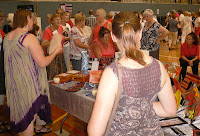 |
| Geelong City Hall |
On 24 September,
the City of Greater Geelong council decided to fly the Aboriginal flag
alongside the Australian flag over City Hall.
This decision follows the state government's decision in May to rename the 4.5m arterial link (formerly known as '4C') in Armstrong Creek Baanip Boulevard. The name honours local Aboriginal man Willem Baanip, a Wathaurong man who was born in 1836 near what is now Market Square, lived on the Duneed Aboriginal Land Reserve near to the current Ghazeepore Road and died in 1885. The newly named road will link the Geelong Ring Road and the Surf Coast Highway. VicRoads expects to start work on the new road in late 2013 and finish it in 2016.
Many communities are taking similar actions to
recognise their Aboriginal heritage; and this is happening as Australia prepares for a referendum on a proposal to recognise
Australia’s Aboriginal peoples formally in the country’s Constitution.
A local act of recognition
Drysdale and Clifton Springs continue to
be enriched by the culture of today’s Wathaurong people, which goes back
thousands of years. In the lead-up to the Constitutional Recognition referendum,
we could consider making our own formal recognition of the
area’s Aboriginal people and heritage. One suggestion made to DCSCA is that we ask
people on the north Bellarine how they would feel about renaming the
Portarlington Road as Wathaurong Way.
Communities often name roads after local
dynasties - Drysdale and Clifton Springs have several examples. How appropriate, then, to name Portarlington Road after the area’s
longest-standing ‘dynasty’ – the Wathaurong people. To make the re-naming a real act of
community recognition, it needs support from across the community. DCSCA
invites local people to start conversations in the area about the proposal and
to tell us your views.














